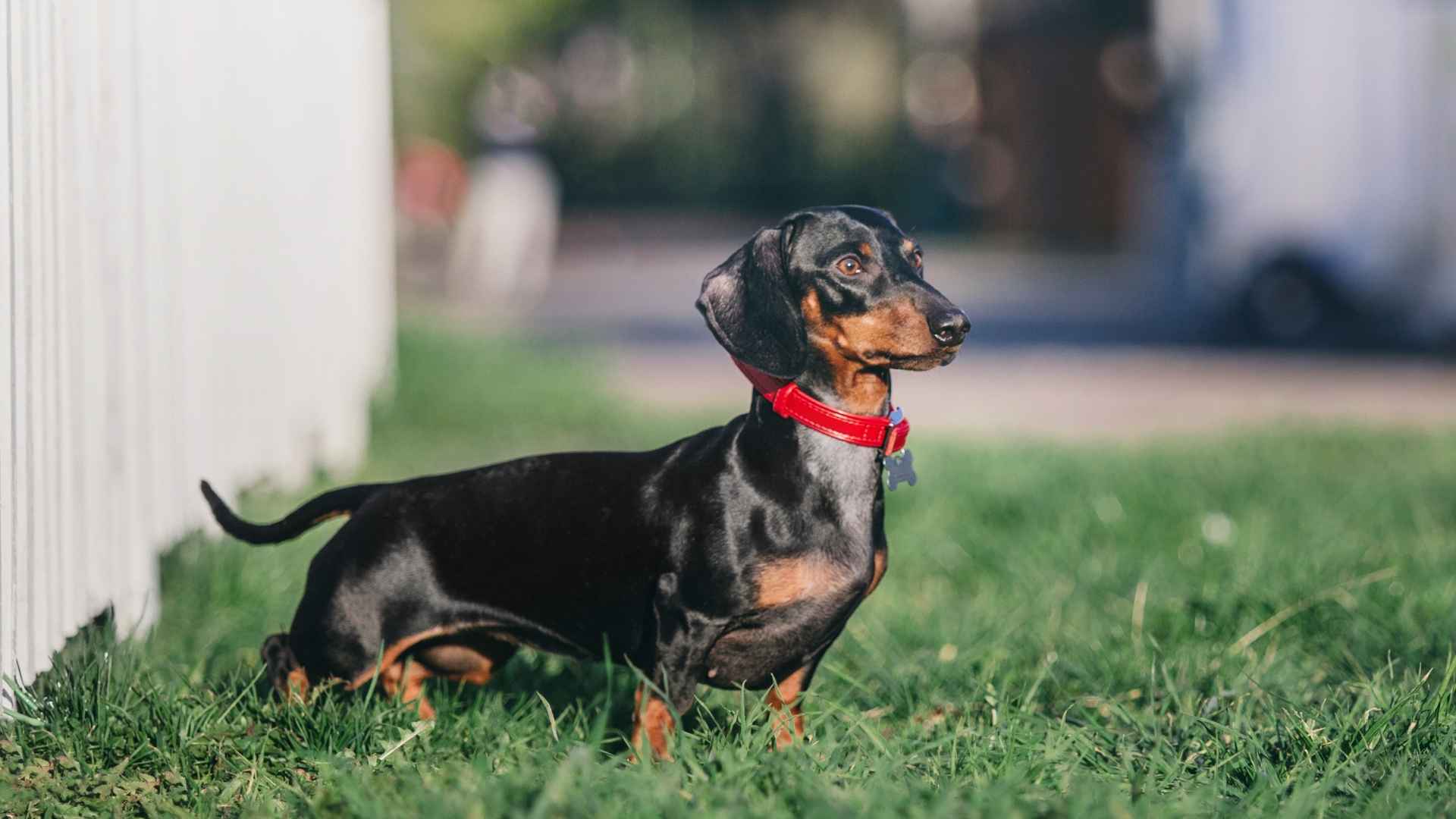Picture this: your child is laughing on the swings, and a calm dog lies by the bench, tail thumping now and then, eyes on “their” kid the whole time. Some breeds seem made for this moment. They’re steady, gentle, and happy to wait while children run, climb, and play.
Dogs that do well at playgrounds share a few traits: a patient nature, good leash manners, and low reactivity to noise and movement. They don’t mind pausing the action, and they enjoy simply being near their people. With early socialization and basic training—sit, stay, and a relaxed “wait”—these dogs learn to settle quietly, greet kindly, and move on when it’s time to go.
Safety still comes first. Keep your dog leashed where required, bring water, choose shade on hot days, and give space to other families. Teach kids to ask before petting and to avoid sharing snacks.
In this article, you will learn about dog breeds that share this steady temperament, perfect for families who want calm companions at the park.
Dog Breeds That Wait Patiently For Kids At Playgrounds
1. Golden Retriever

Golden Retrievers have a naturally calm, steady nature that makes them perfect companions for children at playgrounds. They remain relaxed even in noisy, crowded spaces, patiently waiting without fuss. This trait comes from generations of breeding for balanced, non-reactive behavior.
Observant and Attentive
Instead of wandering like most dogs, Golden Retrievers often keep watch over their familiar humans. They form deep bonds with children, quickly noticing if one strays too far. Their quiet vigilance is a reason they’re trusted in therapy and assistance roles.

Playful Yet Controlled Energy
Goldens enjoy active play but easily adapt to moments of stillness. At playgrounds, they’re content to lounge until it’s time for a short burst of activity. This flexibility is why they’re considered an excellent family dog for many lifestyles.
Trustworthy Around Strangers
They handle busy spaces confidently, meeting unfamiliar people with friendly curiosity instead of defensive barking. Golden Retrievers are known for balanced, predictable behavior in unpredictable settings. This makes them a safe choice for first-time dog owners seeking reliability.
2. Labrador Retriever
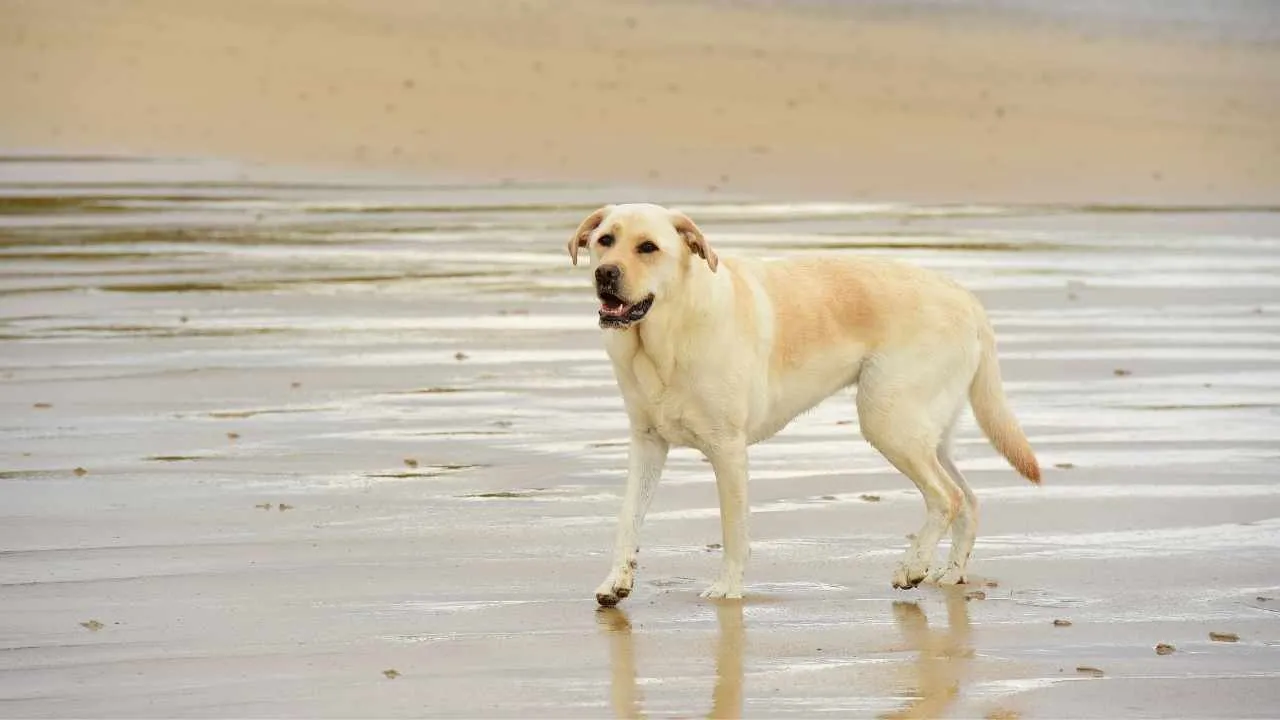
A Labrador Retriever can remain settled in busy areas, observing activity without unnecessary barking or agitation. This balanced temperament is why many families trust them to be near small children, as they can stay composed even when the noise level rises.
Adaptable to Playground Settings
Their easy-going nature allows them to adjust to changing environments, whether the playground is quiet or bustling. They are known to position themselves nearby, keeping a steady watch while letting kids enjoy their time without interruption.
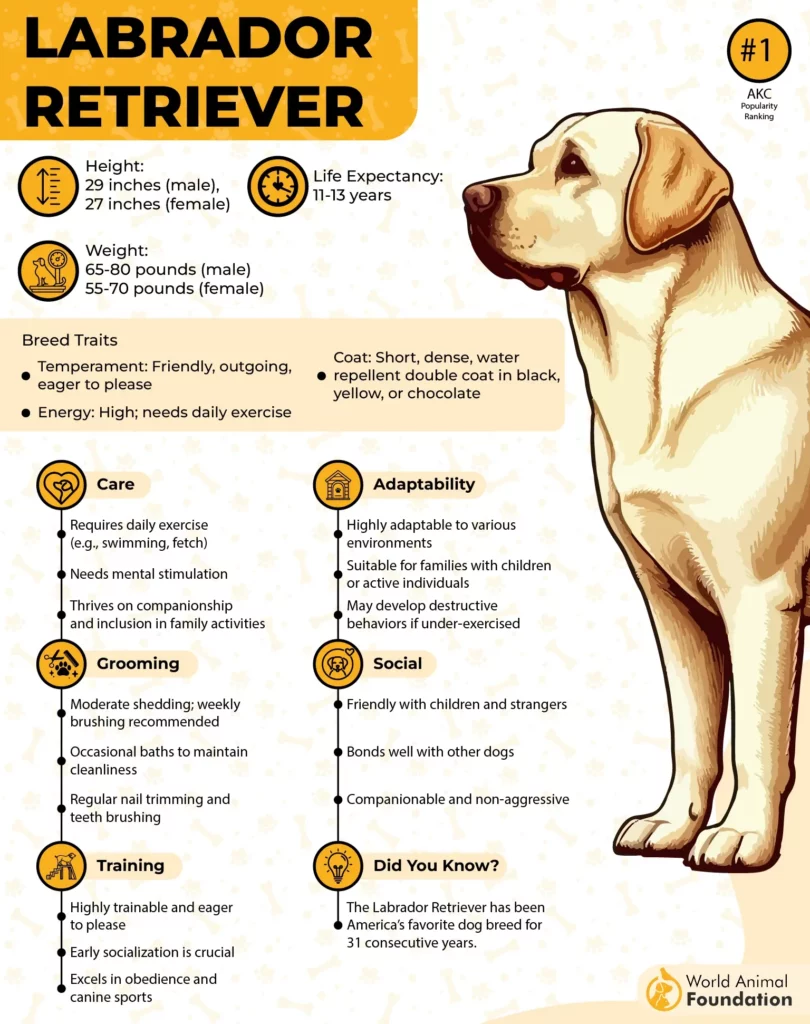
Compatibility With Other Animals
Labradors typically integrate well into multi-pet households, showing tolerance toward other pets who may be present during outings, as stated in Our World of Dogs. This adaptability makes them a dependable choice for public spaces where interactions with unfamiliar animals are likely.
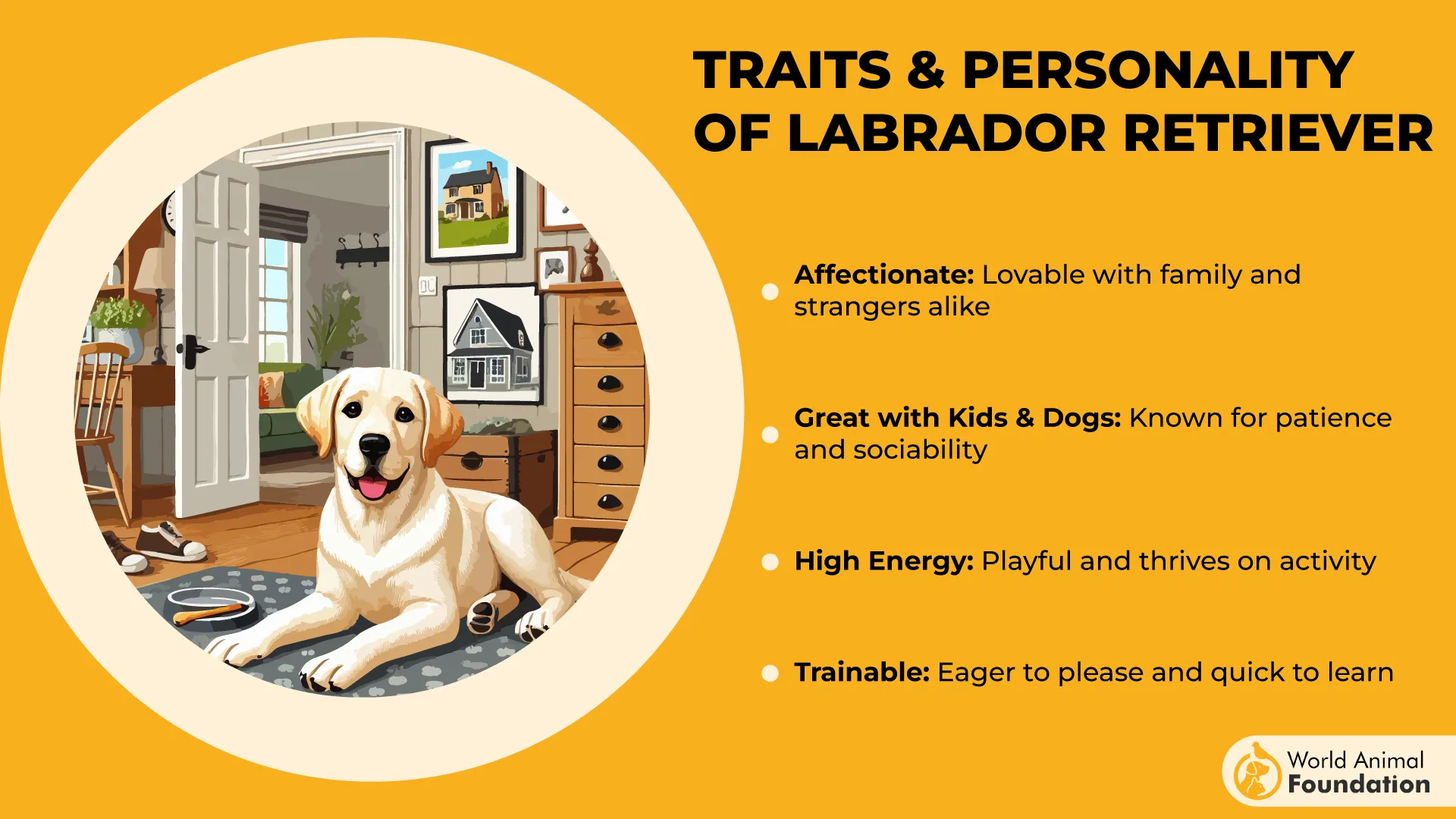
Responsive and Gentle Greetings
When approached after play, they greet calmly, often waiting for a signal before moving closer. This controlled response helps avoid knocking over excited children and reinforces why they are considered a great dog for active family lifestyles.
3. English Mastiff
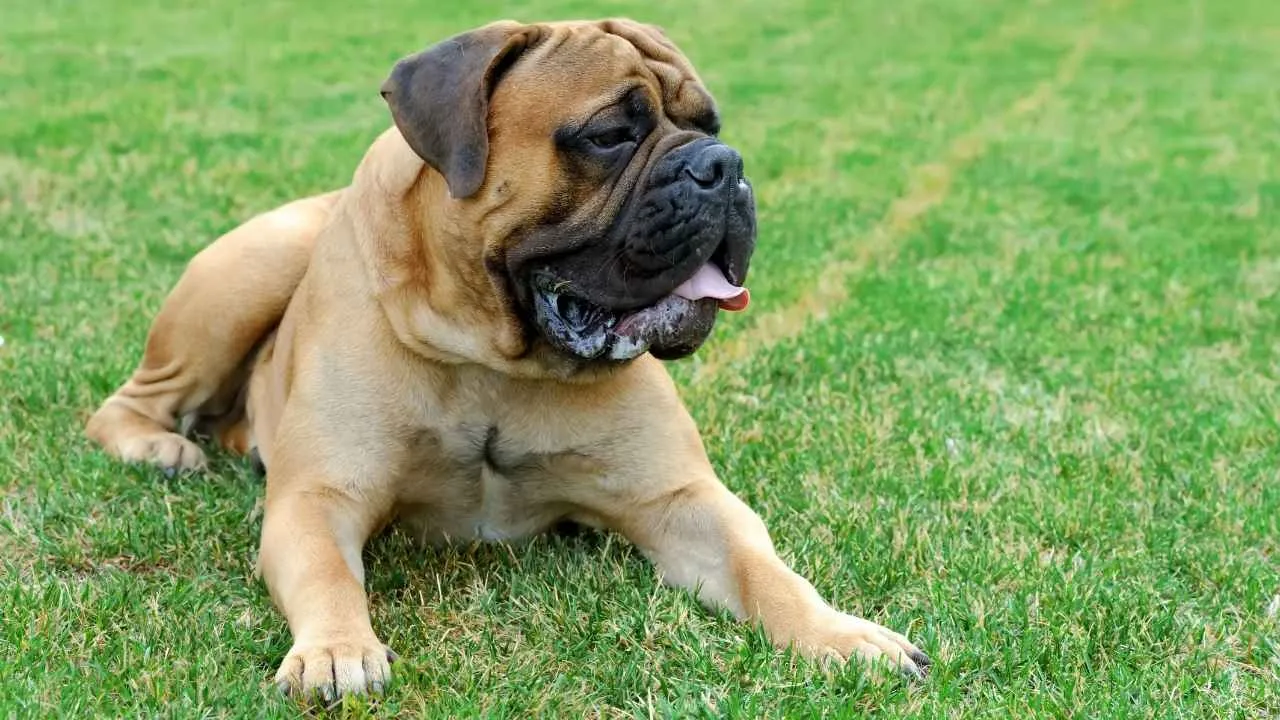
The English Mastiff often chooses to lie quietly, even in environments filled with shouting and movement. Their immense size alone creates a protective buffer that keeps unfamiliar people or animals at a respectful distance. This calm vigilance makes them suited for public spaces where children are active.
Tolerance and Patience
These dogs rarely react hastily, giving children the freedom to run and play without interference. Even young pups of the breed display an instinct to observe rather than jump into the action. Such controlled behavior helps them blend into family routines during outdoor gatherings.
Protective Instincts
A Mastiff is deeply loyal to its household and maintains a steady watch when kids are nearby. They are quick to step between a child and any approaching animal if they sense a threat. This natural guarding quality has been valued in both home and community settings.
Gentle Interactions
Despite their imposing frame, Mastiffs adjust their movements when engaging with children. They often lean in slowly or sit still, allowing a young friend to approach first. This measured response fosters trust and comfort between the dog and the child.
4. Great Pyrenees
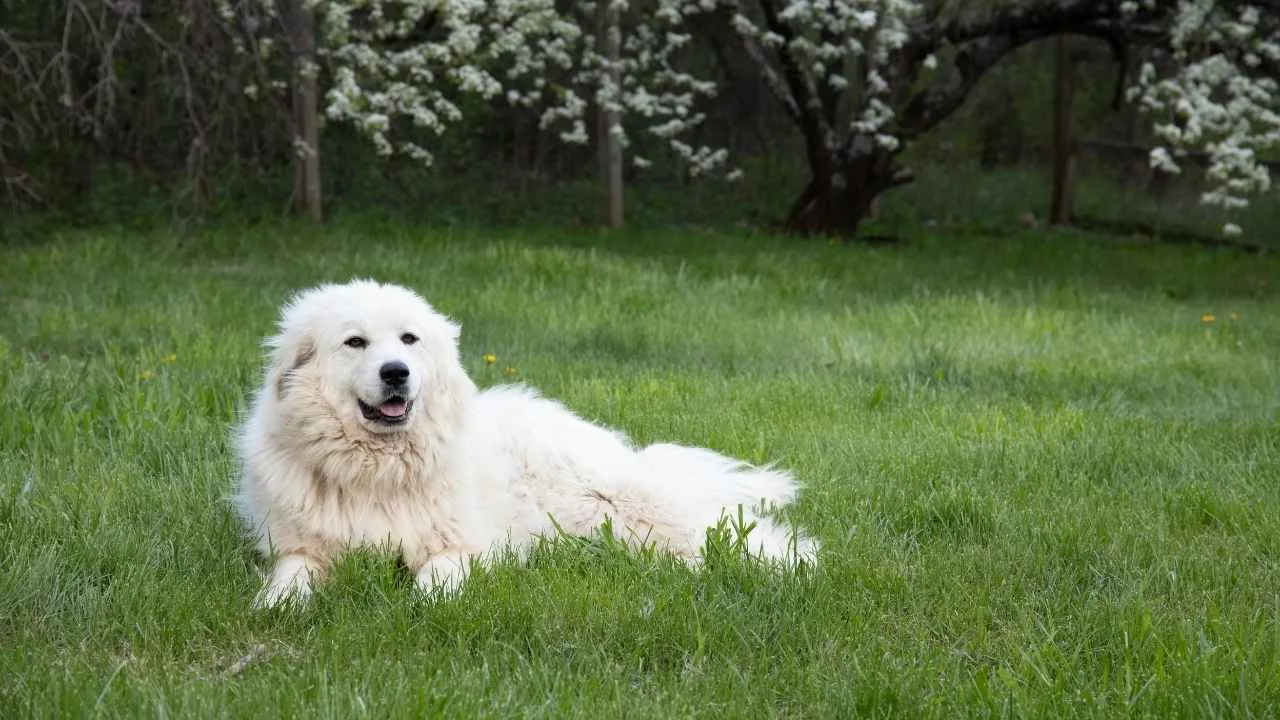
The Great Pyrenees is naturally steady, able to remain still even when surrounded by energetic play. This quiet confidence keeps them from becoming restless or distracted during long periods of waiting. Their relaxed posture often reassures children as they move around.
Protective Yet Unobtrusive
They are known for guarding without unnecessary interference, staying alert while giving children the freedom to play. This balance allows them to be close enough for safety while respecting personal space. Their focus remains on quietly monitoring activity from a comfortable position.
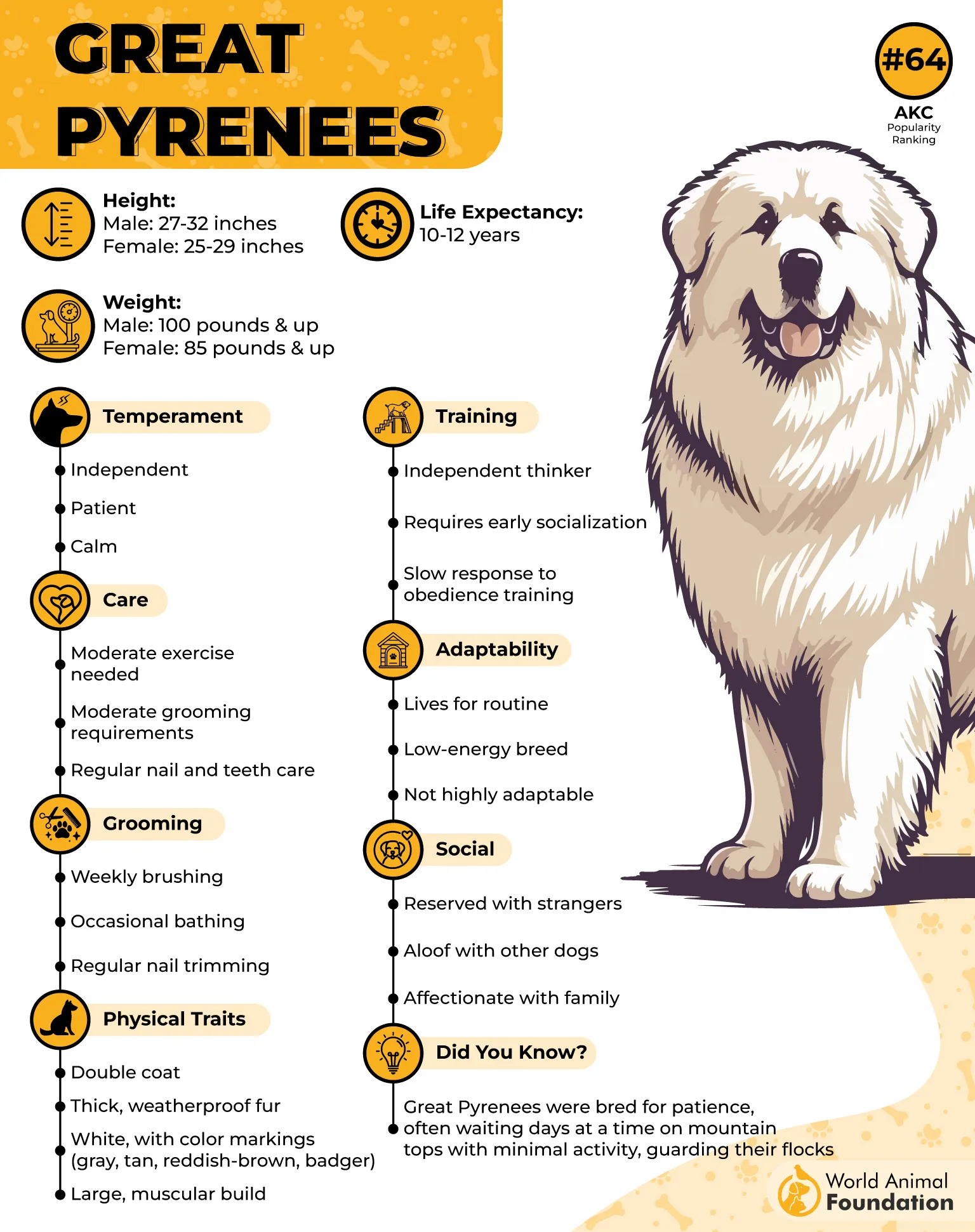
Adapts to Playtime Rhythm
These dogs can match the pace of the environment, staying inactive during active play and becoming more attentive when children approach. Such adaptability makes them dependable in both calm and chaotic moments. They read the scene well without needing constant direction.
Gentle Response to Interaction
When approached after play, the Great Pyrenees responds with slow movements and measured affection. This careful approach prevents accidental bumps or knocks, even with very young children. Their size might be imposing, but their manners make them approachable.
5. Bernese Mountain Dog
Bernese Mountain Dogs are naturally steady and composed, which helps them stay relaxed in bustling playground areas. Their large frame doesn’t make them restless or pushy, and they’re content to remain seated or lying down while children play nearby. This makes them a reassuring presence in open spaces.
Observant and Watchful
They tend to scan their surroundings quietly, picking up on changes in the environment without showing unnecessary alarm. This alert yet gentle awareness means they can notice when children need to be approached or when they’re simply enjoying their play.
Adaptable to Activity Levels
These dogs are comfortable adjusting to different paces, whether children are running around energetically or pausing to rest. Their patience allows them to match the slower rhythm of a break or stay calm during bursts of activity. Such adaptability keeps them reliable in varied playground conditions.
Gentle Around Small Children
Bernese Mountain Dogs are known for their careful movements, especially when interacting with younger kids. Their natural restraint reduces the risk of knocking a child over, even in moments of excitement. This measured approach is one reason they are trusted in family environments with active children.
6. Dachshund
Their compact size allows Dachshunds to settle in tight spots near benches or play structures without feeling confined, as per Greencross Vets. This makes them well-suited for quietly waiting while children explore larger areas. Their tendency to stay close helps maintain visibility and comfort for young owners.
Watchful Yet Relaxed
Dachshunds have a natural alertness that keeps them aware of movement and sound, but they can remain seated without constant activity. This balance of attentiveness and calm means they are present without being disruptive during children’s playtime.
Loyal to Their Companions
These dogs form strong bonds with their families and often position themselves within sight of the child they accompany. They are known to hold their spot for extended periods, occasionally shifting only to ensure they have a clear view of their surroundings.
Steady Around Distractions
Playgrounds can bring sudden noises and quick movements, yet Dachshunds tend to focus on the people they trust rather than the chaos around them. This focus helps them maintain a patient posture until the child returns.
7. Saint Bernard
Saint Bernards can handle the noise and bustle of a playground without becoming agitated. Their large size gives them a grounded presence that children naturally feel comfortable around. This ability to remain still and relaxed helps them blend into family activities without drawing unnecessary attention.
Protective Instincts Without Aggression
They possess a natural watchfulness, often positioning themselves where they can see both the child and the surroundings. This alert yet non-confrontational behavior allows them to safeguard without interfering in play.
Endurance for Long Waits
Saint Bernards were bred for work in demanding alpine conditions, which gave them strong stamina. This endurance translates into the patience needed to wait while children engage in extended play. Their steady breathing and unhurried manner make them ideal companions for outdoor time.
Gentle Responses to Interaction
When children approach after play, these dogs tend to respond with slow movements, lowering their heads for petting or leaning gently into contact. Their restraint prevents accidental bumps or knocks that could happen with more excitable breeds.
Conclusion
The breeds here bring a steady presence to busy outdoor spaces, giving families confidence during active days. From the early weeks as puppies to their calm maturity, they learn how to wait without pulling attention from the children they watch over.
They handle the unpredictability of babies, strangers, and playground noise with quiet assurance. A responsible owner considers health concerns, choosing the right food, regular care, and the occasional treat to keep each pup content.
At home, they settle easily into the house routine, becoming a part of daily life rather than a disruption. Whether offering comfort to a shy person or joining a moment of simple fun, these dogs prove their value through patience, loyalty, and the trust they build over time.


